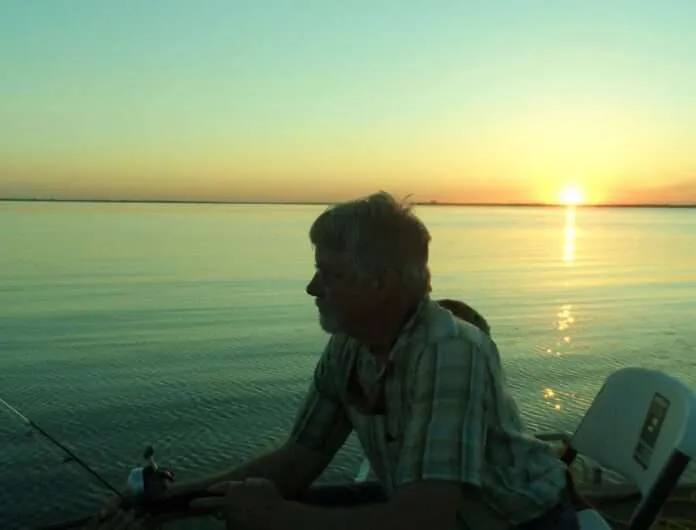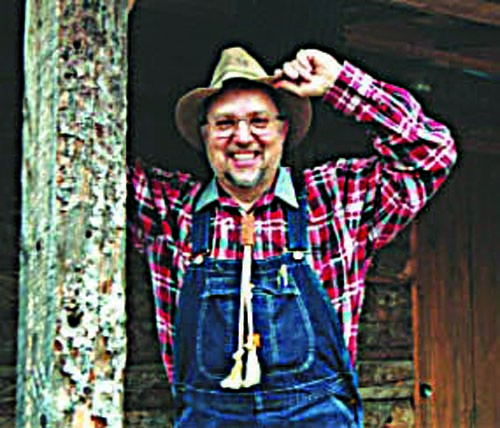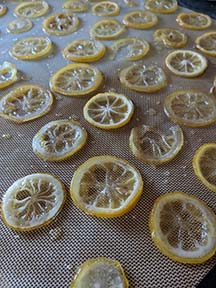From the Office of Public Affairs | http://www.news.ku.edu
Headlines
People underestimate AI capabilities due to ‘exponential growth bias,’ study finds
LAWRENCE — A new scholarly article from a University of Kansas professor of business examines the human biases that underestimate artificial intelligence’s full capabilities. In his study, Nate Meikle examined the effects of motivated reasoning and exponential growth bias on human judgment. Questions tested how participants might envision the interaction between AIs and humans decades from now. “We are, on average, going to be surprised at how quickly AI progresses and potentially surpasses human capability,” he said.
School of Business to recognize 2024 Distinguished Alumni Award recipient
LAWRENCE — The University of Kansas School of Business will honor executive Jason “Jay” Meschke with its 2024 Distinguished Alumni Award on April 18 during a private event. He earned his bachelor’s degree in business administration in 1980 and his MBA in 1982, both from KU. Meschke is the president of CBIZ EFL Associates and CBIZ Talent & Compensation Solutions.
Researcher reclaims 16th century Moroccan woman leader from obscurity
LAWRENCE – While growing up in Morocco, Amal El Haimeur was never taught about Sayyida al-Hurra, the country’s 16th century “pirate queen” who overcame sexism to lead and defend the people of her city-state and region. The KU professor then embarked upon a research journey through cities and archives across Morocco, combing through rare scholarly resources, that resulted in the article titled “Sayyida al-Hurra: A Forgotten North African Queen and Military Leader,” published in the first edition of the new KU scholarly journal Africana Annual.
Full stories below.
————————————————————————
Contact: Jon Niccum, KU News Service, 785-864-7633, [email protected]
People underestimate AI capabilities due to ‘exponential growth bias,’ study finds
LAWRENCE — When asked to name the greatest potential threat to humanity, many scientists believe artificial intelligence (AI) to be a top contender. Yet there seems to be very little currently being done to ensure its safety.
“We are, on average, going to be surprised at how quickly AI progresses and potentially surpasses human capability,” said Nathan Meikle, an assistant professor of business at the University of Kansas.
His new paper, titled “Unaware and Unaccepting: Human Biases and the Advent of Artificial Intelligence,” examines the human biases that impede AI’s assessment. His experiments find that people are prone to underestimate AI capabilities due to exponential growth bias and people reject the aversive implications of rapid technological progress even in cases in which they themselves predict the growth rate.
The new work is published in Technology, Mind, and Behavior.
“We’re motivated to believe things we want to have happen,” said Meikle, who co-wrote the paper with Bryan Bonner of the University of Utah.
“Most of us don’t want to live in a world where AI is smarter than humans. And because we want humans to be superior to AI, there’s a chance that we are sticking our head in the sand. We don’t want AI to surpass human intelligence. Therefore, we think it’s not going to happen.”
Motivated reasoning emerges most often when the facts are ambiguous.
“For instance, I don’t want to get cancer. Say my odds of getting cancer in a lifetime are 40%. But because I don’t want cancer, and because I can look to my past and say, ‘I’m reasonably healthy, and I’ve never had cancer,’ I’m prone to underestimate my odds of getting cancer, and I might think the probability is only like 20%,” he said.
But exponential growth bias (which is our inability to accurately estimate exponential growth curves) becomes even more skewed when a concept turns more abstract.
“A simple example is would you rather have a billion dollars or would you rather have the money from doubling a penny 64 times?” he said. “Our intuition tells us to take the billion. But from doubling a penny, you’re actually looking at more than 184 billion dollars. And this example is especially relevant to AI because AI has been progressing at an exponential rate, in tandem with computing speed.”
To verify this theory as it relates to underestimating AI, Meikle recruited several hundred participants in the U.S. and conducted two experiments that examined the effects of motivated reasoning and exponential growth bias on human judgment. The questions tested how participants might envision the interaction between AIs and humans decades from now. (Sample: Imagine 20 years into the future and AIs are equal in intelligence to humans. How positive do you feel about the future you just imagined?)
“An AI doesn’t need to be way smarter than us to pose an existential risk,” Meikle said.
“Genetically, we share about 99% of our DNA with chimpanzees. But it’s just that little bit of extra intelligence which allows us to be at the top of the food chain. And so if an AI were to become more intelligent than humans — which I think there’s a reasonable probability of happening very soon — then maybe the AI adopts a goal that is not consistent with human flourishing … and we’re in trouble. Or, even more believably now, people use AI to manipulate other humans.”
An Idaho native, Meikle came to KU in 2021. He is a former receiver with the BYU Cougars. (He caught a dozen passes in the 2005 Las Vegas Bowl.) He also hosts a podcast titled “Meikles and Dimes,” where he interviews guests about leadership, including Kansas City Chiefs head coach Andy Reid. Meikle teaches courses in leadership and ethics at KU.
Meikle said he personally employs AI all the time.
“I’m getting to the point now where I use ChatGPT every day. It’s one of my most commonly opened apps — just asking it questions about what happened here, what happened there,” he said.
Is he fearful it might eventually replace him?
“Does it bother me that a calculator can run calculations better than me? No. And so in some ways, we don’t care. But I think we’re especially concerned about if artificial intelligence takes our jobs,” Meikle said. “I don’t mind if a calculator can calculate faster than me. But if it’s collecting my paycheck, there are going to be problems.”
-30-
————————————————————————
The official university account for X (formerly Twitter) is @UnivOfKansas.
Follow @KUnews for KU News Service stories, discoveries and experts.
————————————————————————
Contact: Lauren Cunningham, School of Business, 785-864-9540, [email protected], @KUbschool
School of Business to recognize 2024 Distinguished Alumni Award recipient
LAWRENCE — The University of Kansas School of Business will honor executive Jason “Jay” Meschke with its 2024 Distinguished Alumni Award.
Meschke will be recognized for his dedication to business excellence, community service and commitment to KU on April 18 during a private event.
He earned his bachelor’s degree in business administration in 1980 and his MBA in 1982, both from KU. Meschke is the president of CBIZ EFL Associates and CBIZ Talent & Compensation Solutions.
In his role, he has completed more than 800 successful senior-level searches spanning several industries. Meschke’s achievements during his 30-year history in the executive search field place him in the top 1% of search consultants in the U.S. He began his career in Texas at one of the country’s 25 largest banks. Following that, he worked at two Kansas City banking franchises, holding roles as chief lending officer/minority owner at one and president at the other. The two financial institutions were later sold to Nasdaq-traded companies.
Meschke serves on the KU School of Business Dean’s Advisory Board, and he is immediate past chairman of the Enterprise Center of Johnson County, a venture development organization. He also holds a senior adviser role with Star Mountain Capital, a New York City-headquartered private equity/private credit firm. He previously has served on the boards of numerous organizations, including as chair of KCPT (Kansas City Public Television) and the Shawnee Mission Medical Center Foundation.
The School of Business established the Distinguished Alumni Award in 1998 to honor outstanding graduates. To date, 67 alumni have been recognized with the award. Previous recipients include businessman and investor David Booth, Deloitte’s global chief operating officer Frank Friedman, entrepreneur and investor Tim Barton, and Cerner Corp. co-founder Cliff Illig.
Award recipients are chosen from the nominations of other alumni and the Dean’s Advisory Board. Candidates are selected based on their business success and service to their communities and to KU.
-30-
————————————————————————
Don’t miss new episodes of “When Experts Attack!,”
a KU News Service podcast hosted by Kansas Public Radio.
https://kansaspublicradio.org/podcast/when-experts-attack
————————————————————————
Contact: Rick Hellman, KU News Service, 785-864-8852, [email protected], @RickHellman
Researcher reclaims 16th century Moroccan woman leader from obscurity
LAWRENCE – While growing up in Morocco, Amal El Haimeur was never taught about Sayyida al-Hurra, the country’s 16th century “pirate queen” who overcame sexism to lead and defend the people of her city-state and region.
So when El Haimeur, now an assistant teaching professor of African & African American studies at the University of Kansas, read a passing reference to al-Hurra in a book titled “The Forgotten Queens of Islam,” she went looking for more information about her. But there was hardly any.
Thus, El Haimeur embarked on a research project that took her to cities and archives across Morocco and resulted in the article titled “Sayyida al-Hurra: A Forgotten North African Queen and Military Leader” in the first edition of the new scholarly journal Africana Annual, based in KU’s Department of African & African-American Studies.
“I went to the 2022 summer book fair in Rabat, with publishers coming from all over the Arab world and Africa. I thought I would find resources there, but I did not find anything available about her,” El Haimeur said.
Editors and bookstore owners told her they had nothing available on her scholarly search, El Haimeur said.
“So I decided to go to Chefchaouen, her hometown. There is an educational center there, and they connected me with two historians — one who lives there and the other who lives in Rabat.”
El Haimeur said Ali Risouni and Fatima Bouchmal provided her with copies of history books that cite both primary and secondary sources about al-Hurra and that are unavailable elsewhere — neither commercially nor in libraries.
El Haimeur took pictures or made copies of the materials.
“There is not another edition available,” El Haimeur said. “It’s really sad that resources are not available about her.”
Rectifying this lack of information about al-Hurra – particularly in English — was one of El Haimeur’s purposes in writing the article about her. El Haimeur’s translations of the Arabic writings the Moroccan scholars loaned her are the basis for the article’s narrative.
The KU researcher said that al-Hurra’s family status as sharifis, or descendants of the Islamic Prophet Muhammad, gave al-Hurra a certain degree of power. Her father founded Chefchaouen, building the fortress there that today serves as a museum. He was a trained military leader, and she learned tactics and strategy from him.
She learned naval warfare from her first husband, Moulay Ali al-Mandri. El Haimeur said that Muslim leaders considered these high-seas actions to be jihad, or justified warfare, while Europeans considered them piracy.
In addition to Arabic, al-Hurra spoke Spanish and Portuguese, giving her an advantage in diplomacy with those countries.
El Haimeur writes that al-Hurra’s two marriages served to make alliances with nearby rulers to strengthen their conjoined political entities. It was while al-Mandri was away on military missions that al-Hurra began her rule. She later led pirate raids against the Spanish and Portuguese in the Mediterranean Sea and Atlantic Ocean, earning the nickname “the pirate princess of jihad.”
The al-Hurra family had been victims of the Reconquista expulsion of Muslims from Andalusian Granada, El Haimeur writes, and they feared further losses.
El Haimeur writes that, in addition to keeping her enemies off balance, “Piracy gave al-Hurra revenue as well as a means to strengthen diplomatic relationships with foreign countries.”
Following al-Mandri’s death, al-Hurra took over as governor of the Mediterranean port city Tetouan and the surrounding area. She led the northern part of Morocco in the midst of ongoing conflicts between the Iberian powers and the north African Muslim kingdoms.
Al-Hurra’s second marriage, to Sultan Ahmad al-Wattasi, was less successful. The couple never lived together, and the Wattasid clan was overthrown by an alliance that included al-Hurra’s own brother.
El Haimeur said she is pleased to have brought al-Hurra’s story to a wider audience in the English-speaking world with her article. And in fact, she has heard from a Moroccan publisher who wishes to publish it as a booklet in Arabic, to be distributed in her home country.
-30-
————————————————————————
KU News Service
1450 Jayhawk Blvd.
Lawrence KS 66045
Phone: 785-864-3256
Fax: 785-864-3339
[email protected]
http://www.news.ku.edu
Erinn Barcomb-Peterson, director of news and media relations, [email protected]
Today’s News is a free service from the Office of Public Affairs











